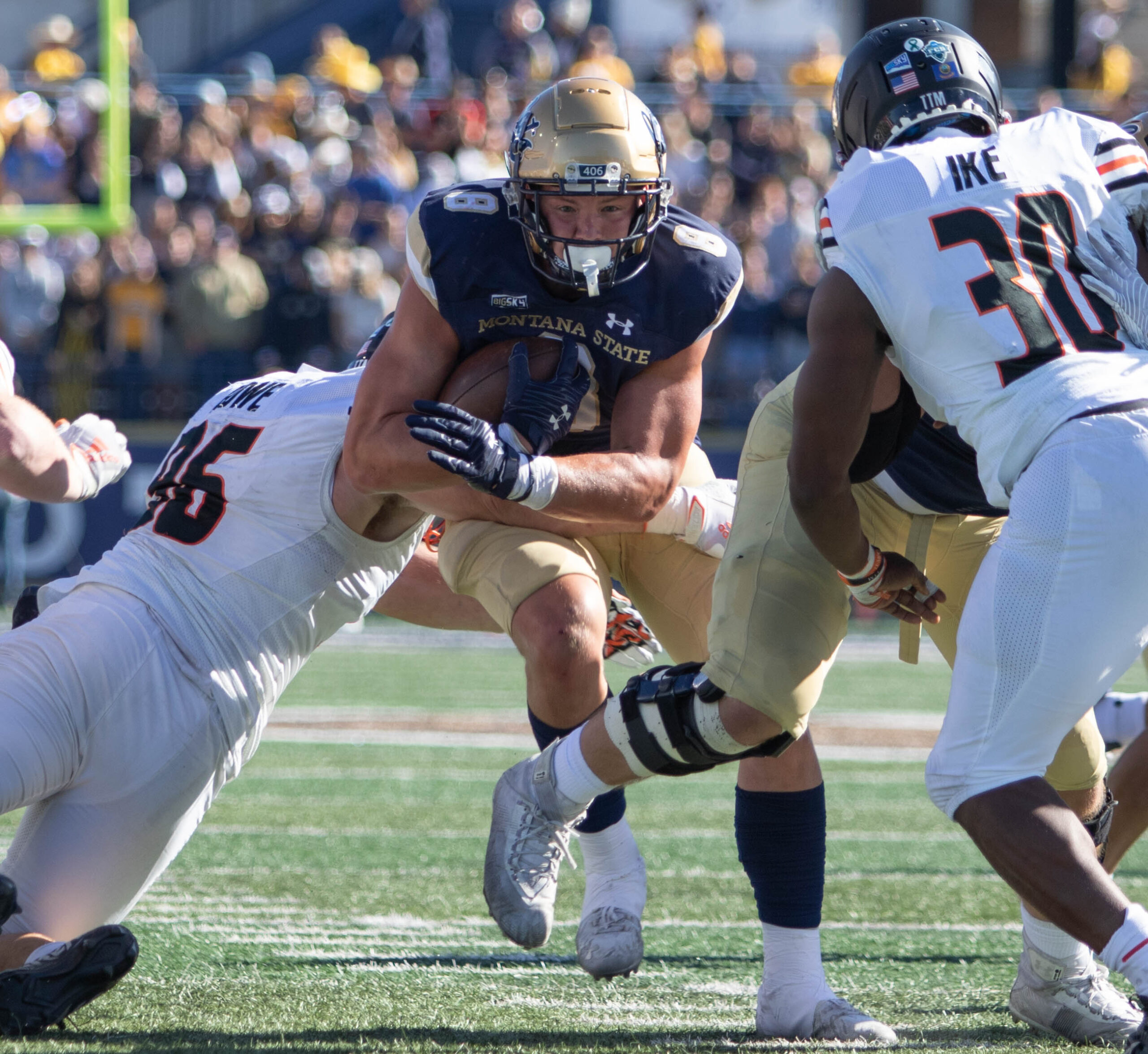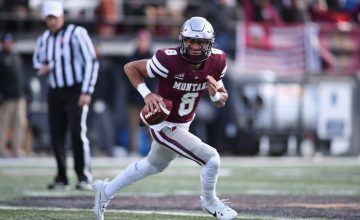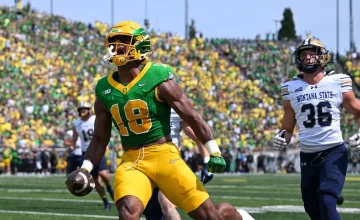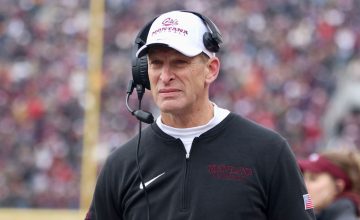BOZEMAN, Montana — The preseason story line has become a totally different tale midway through the 2022 campaign.
Would Montana State be able to run the ball to the standard its set during the 21st century?
With All-American tailback Isaiah Ifanse declared out for the foreseeable future before the season began, the question loomed.
The fact that All-American offensive tackle Lewis Kidd now plays for the New Orleans Saints, two-time All-Big Sky offensive guard Taylor Tuisasosopo graduated and T.J. Session, a starter as a freshman last season, now plays for Cal-Berkeley made the question even more complicated.
Then Montana State’s running backs started dropping like flies. Kaegun Williams, a graduate transfer from San Diego State expected to be MSU’s No. 1 tailback, was declared out for the season before Montana State’s opener against McNeese State.
In the first game of the 2022 season, Lane Sumner rushed for 176 yards…then suffered an elbow injury the following week that cost him the next four games.
Against Morehead State (Montana State’s second opponent of the season), MSU true freshman Jared White broke his leg on the first carry of his first career start. That 63-13 lambasting ended with wide receiver Marqui Johnson rushing as many times as Elijah Elliott, MSU’s only remaining available running back.
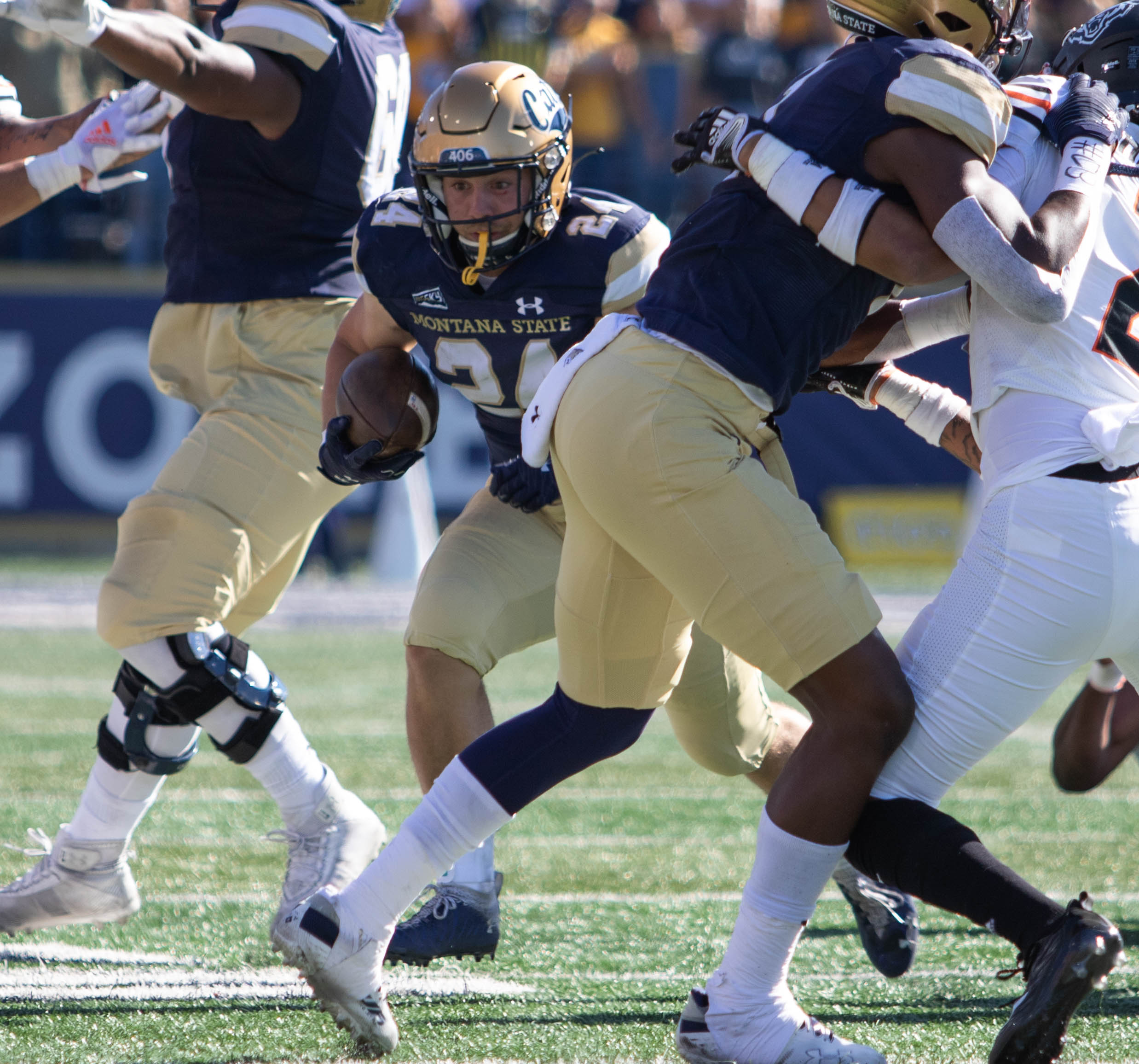
By the time dual-threat sophomore quarterback Tommy Mellott smashed the back of his head off the blood-red turf at Roos Field in MSU’s 38-35 win at Eastern Washington, the list of unavailable ball carriers seemed a mile long
Yet from the first game of the season until Saturday’s 37-6 bulldozing of Idaho State, it truly has not mattered who is carrying the mail for the Bobcats.
The Montana State offensive line has been perhaps the most pleasant surprise of the Big Sky Conference and the Bobcats have steamrolled every opponent on the way to a 3-0 start in Big Sky play and a 5-1 start overall that includes four convincing wins over FCS opponents.
On a beautiful homecoming day in front of a fourth straight sellout crowd, MSU got Sumner back. And Garrett Coon, a former Wyoming Gatorade Player of the Year who walked on to the Bobcats, is also back among the ranks of the available.
But the key to an offense that is rushing for 293 yards per game (the second-best average in the FCS) has been an athletic, fit offensive line that has proven it can operate a variety of blocking schemes and move opponents off the line of scrimmage with impressive frequency.
“The run game has to drive us on offense and stopping the run game has to drive us on defense,” Vigen said. “We’ve been able to run it effectively in a lot of different ways. Today, we looked a lot different running it 52 times and that’s grinding it out and the majority fo those rushers were by running backs.
“You look at where were a month ago and that’s encouraging. I think we can do it a bunch of different ways and that allows us to take advantage of what the defense is ultimately doing to us. And as we go into each new week, it’s it’s own new week.”
The starting offensive line unit is made up of one junior in right guard Cole Sain plus four sophomores in center Justus Perkins, left guard J.T. Reed, left tackle Rush Reimer and right tackle Marcus Wehr. Only Reimer weighs more than 300 pounds, a rarity in this day and age of supersized linemen.
“We are super athletic so to not use our athleticism would be like shooting ourselves in the foot,” said MSU sophomore center Justus Perkins, a 6-foot, 280-pound former walk-on out of Bozeman High who entered the season as the only returning starter for MSU.
“With the offensive line we have, we might as well use our attributes.”

The visiting Bengals actually had arguably the best performance against Montana State’s run game of any opposing defense thus far six games into this season, at least in terms of yards per carry. MSU finished Saturday’s victory with 255 rushing yards on 52 carries, averaging 4.9 yards per clip.
MSU rushed for 214 yards against Oregon State, but still averaged 5.2 yards per run. Montana State totaled 359 rushing yards and averaged 6.1 yards per carry against McNeese State; totaled 292 yards on the ground and averaged 9.4 yards per run against Morehead; compiled 355 yards and averaged 5.9 yards per rush against Eastern; and racked up 325 yards and averaged 7.2 yards per run in last week’s 41-24 win over UC Davis.
“(Offensive coordinator Taylor) Housewright does a great job every week of giving us a great game plan,” Perkins said. “We have been executing well. That’s a credit to how we practice, two-repping, coming out, repping it, seeing the looks and luckily, we have a great group of guys where if we see something we didn’t practice, we can brain storm and come up with an idea to fix it.”
Sumner, who finished with exactly 100 yards, had a long scamper of 23 yards. Elliott, who exploded for a career-best 160 yards against EWU, finished with 16 carries for 68 yards.
“They (Sumner, Elliott) are just different and when you are running a zone game, it’s a lot about tempo, it’s a lot about vision and I think that makes it challenging for the defense to see different styles,” Vigen said. “I thought Lane ran really hard and I thought he saw things well.”
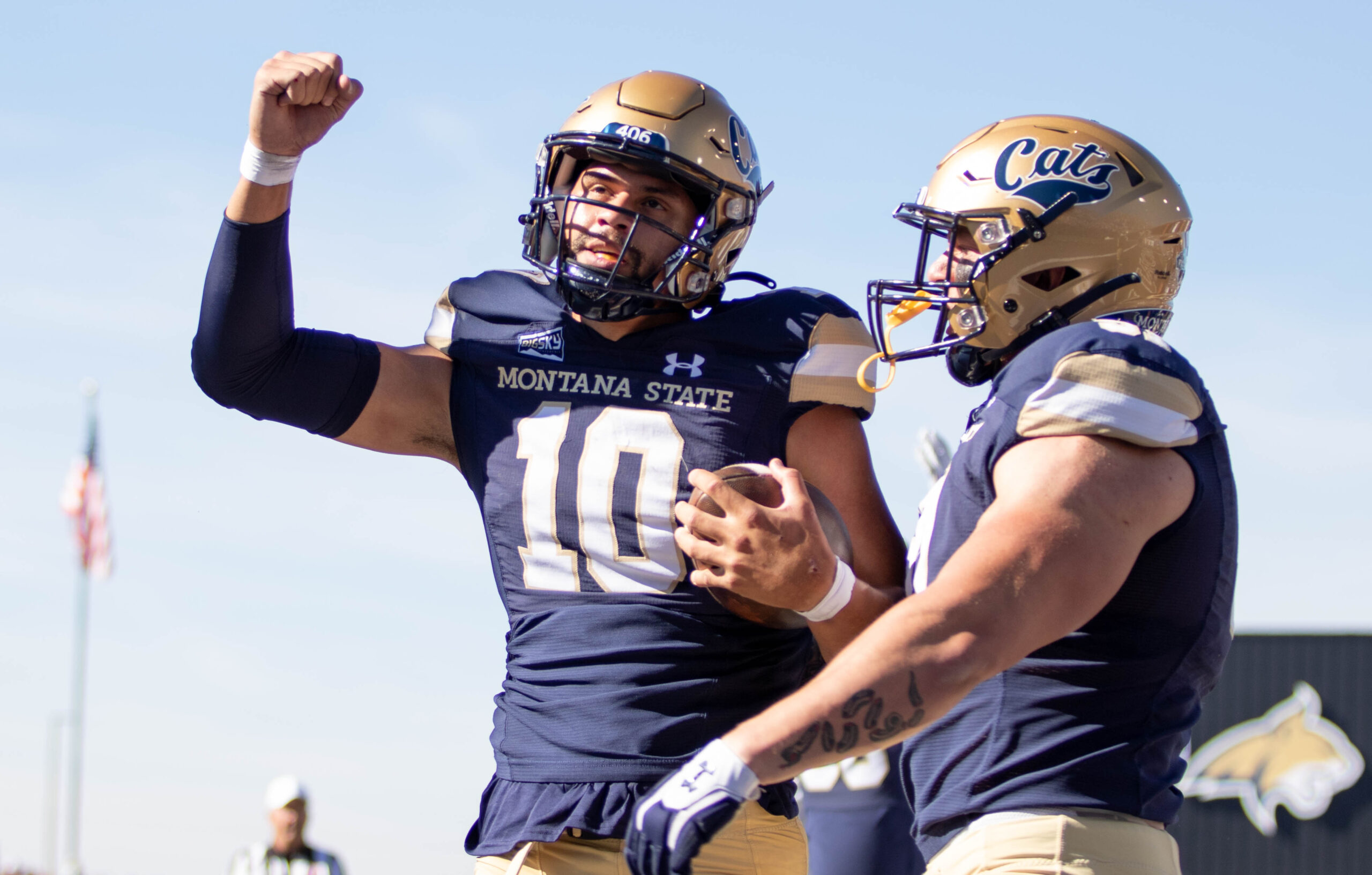
And for the first time this season, MSU took the heavy load off of its quarterbacks. Mellott rushed 16 times for 44 yards and a score against McNeese State and another 18 times for 135 yards against Oregon State.
Sean Chambers, a burly and physical downhill runner who boasts 235 pounds on his 6-foot-3 frame, totaled 23 carries the first three games (although he rushed for 127 on just seven totes against hapless Morehead) but carried the ball a total of 46 times (28 against EWU, 18 against UC Davis) since Mellott was sidelined.
Chambers entered the game leading the Big Sky in rushing yards (548) and the nation in rushing touchdowns (12). He carried the ball just eight times for 33 yards (4.1 yards per rush) but did add three touchdowns.
Chambers’ 15 touchdowns through six games puts Troy Andersen’s single-season rushing touchdown record of 21 set in 2018 (which is also the Big Sky record for rushing TDs by a quarterback in a single season) within reach.
“We moved the ball a little bit in the second half but we wanted to keep Sean out of harm’s way as much as we could,” Vigen said. “That was probably the biggest priority and not throw the ball all over the field.”

Montana State has been able to do what it wants offensively despite the massive turnover in play-makers — did we mention star wide receiver Lance McCutcheon now plays in the NFL too? — because of an offensive line that operates in unison.
Perkins showed last season that he can sharply identify fronts pre-snap. Reed has show elite physicality at the point of attack. Sain, who started his career at Montana before spending a year at Riverside junior college in California before returning to the Big Sky, has had to fight off competition before settling into his starting role.
Reimer saw playing time last season when Sessions was hurt and looks to be the next in line as a four-year starter at offensive tackle. And Wehr has settled in impressively during his first year playing offense after coming to MSU as a defensive lineman out of Billings Central.
On Saturday, the group once again set the pace. MSU had five possessions of 11 plays or more and possessed the ball for 40 minutes, notching 30 first downs along the way.
“I don’t want to pump them up, they are standing right there,” Vigen joked in the post-game press conference. “No, I’ve been really pleased with them. I know we all have. It’s an athletic group, it’s a hungry group and it’s a group that I don’t think has reached its ceiling by any means. By mid-season, they have certainly proven they are a very good offensive line. Now we have to keep reaching for higher.”

